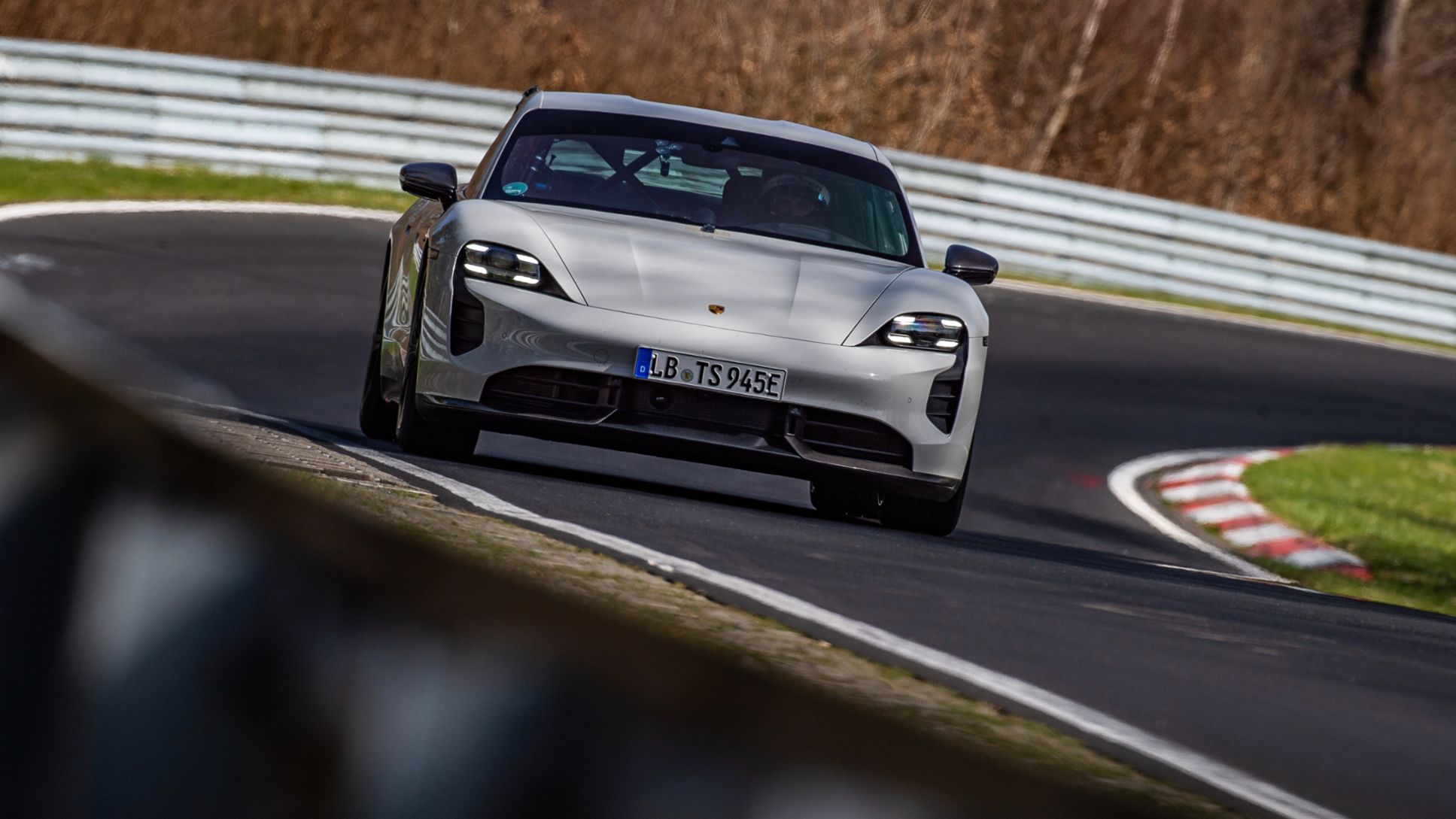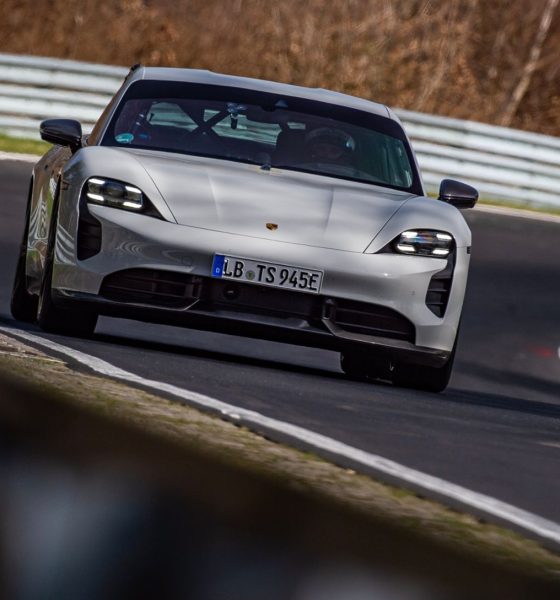Porsche has announced that it will be dramatically increasing the price of its vehicles, specifically its upcoming EVs.
Price cuts have quickly become a defining feature of the first quarter of this year. Perhaps the best example of this movement has been the Chinese market, where brands have been slashing thousands off the price of new EVs.
However, this also extends to western markets, where Tesla has initiated a downward movement.
Counterintuitively, Porsche now plans to do the exact opposite, increasing prices by 10-15 percent on some upcoming EVs, according to a report from Autocar.
The announcement of the price increase comes from the company’s CTO delivering a message to investors regarding the premium German automaker’s goal of achieving a profit margin of 20% in the coming years. Porsche reported yesterday that it had reached a record 18% profit margin last year, and it now looks to double down on those gains.
“We will see significant price increases in the middle of the year for the new model year. That will help a lot to make sure we make strong group operating margins,” said Lutz Meschke, Porsche’s Chief Finance Officer, in his message to investors. “We set ourselves a very ambitious goal when it comes to group return on sales of 17-19 percent in the mid-term, and that means we have to reach parity between BEV and ICE as soon as possible, otherwise, this forecast wouldn’t work.”
The models primarily affected by the price increase will be upcoming EVs, which will be 10-15 percent more expensive than ICE variants. This includes the Porsche Macan EV, 718 EV, Cayenne EV, and the upcoming unnamed larger electric SUV sibling of the Cayenne. Porsche’s CFO didn’t mention if these price increases will also affect the Porsche Taycan, but if the brand hopes to continue to grow profit margins, it may have no other choice.
Porsche does not believe that demand will be affected by the substantial price increase, thanks in large part to the marketing success the brand has had.
Besides the recent trend of price cuts, Porsche is technically following the long-lasting trend within the auto industry of increasing vehicle prices yearly, even if they plan to do so far more dramatically.
This price hike coincides with a peak in R&D investment from the company, primarily into EV technology and sustainable fuel production, which Porsche has become the champion of.
Strangely, the new price hike comes as the brand hopes to achieve 50 percent EV sales by 2025, which could be particularly difficult if brands like Tesla continue to cut prices and offer compelling vehicles. Furthermore, Porsche is going counter to its traditional rivals, including BMW and Mercedes, who have introduced price cuts in China and have been forced to implement similar (if less aggressive) price adjustments in western markets.
Porsche has likely gained significant confidence following its 2022 earnings report, in which it reported record earnings and continued growth of vehicle sales, up 2.6 percent compared to the previous year.
The reaction from Porsche investors has been mixed. While still elevated from its IPO price late last year, Porsche stock has fallen slightly following the announcements over the past few days. However, as Porsche has not yet instituted its price hikes, it is impossible to predict how the car market or investors will react in the long run, especially as the brand continues to grow in popularity, particularly within the enthusiast market.
What do you think of the article? Do you have any comments, questions, or concerns? Shoot me an email at william@teslarati.com. You can also reach me on Twitter @WilliamWritin. If you have news tips, email us at tips@teslarati.com!

News
Tesla FSD fleet is nearing 7 billion total miles, including 2.5 billion city miles
As can be seen on Tesla’s official FSD webpage, vehicles equipped with the system have now navigated over 6.99 billion miles.

Tesla’s Full Self-Driving (Supervised) fleet is closing in on almost 7 billion total miles driven, as per data posted by the company on its official FSD webpage.
These figures hint at the massive scale of data fueling Tesla’s rapid FSD improvements, which have been quite notable as of late.
FSD mileage milestones
As can be seen on Tesla’s official FSD webpage, vehicles equipped with the system have now navigated over 6.99 billion miles. Tesla owner and avid FSD tester Whole Mars Catalog also shared a screenshot indicating that from the nearly 7 billion miles traveled by the FSD fleet, more than 2.5 billion miles were driven inside cities.
City miles are particularly valuable for complex urban scenarios like unprotected turns, pedestrian interactions, and traffic lights. This is also the difference-maker for FSD, as only complex solutions, such as Waymo’s self-driving taxis, operate similarly on inner-city streets. And even then, incidents such as the San Francisco blackouts have proven challenging for sensor-rich vehicles like Waymos.
Tesla’s data edge
Tesla has a number of advantages in the autonomous vehicle sector, one of which is the size of its fleet and the number of vehicles training FSD on real-world roads. Tesla’s nearly 7 billion FSD miles then allow the company to roll out updates that make its vehicles behave like they are being driven by experienced drivers, even if they are operating on their own.
So notable are Tesla’s improvements to FSD that NVIDIA Director of Robotics Jim Fan, after experiencing FSD v14, noted that the system is the first AI that passes what he described as a “Physical Turing Test.”
“Despite knowing exactly how robot learning works, I still find it magical watching the steering wheel turn by itself. First it feels surreal, next it becomes routine. Then, like the smartphone, taking it away actively hurts. This is how humanity gets rewired and glued to god-like technologies,” Fan wrote in a post on X.
News
Tesla starts showing how FSD will change lives in Europe
Local officials tested the system on narrow country roads and were impressed by FSD’s smooth, human-like driving, with some calling the service a game-changer for everyday life in areas that are far from urban centers.

Tesla has launched Europe’s first public shuttle service using Full Self-Driving (Supervised) in the rural Eifelkreis Bitburg-Prüm region of Germany, demonstrating how the technology can restore independence and mobility for people who struggle with limited transport options.
Local officials tested the system on narrow country roads and were impressed by FSD’s smooth, human-like driving, with some calling the service a game-changer for everyday life in areas that are far from urban centers.
Officials see real impact on rural residents
Arzfeld Mayor Johannes Kuhl and District Administrator Andreas Kruppert personally tested the Tesla shuttle service. This allowed them to see just how well FSD navigated winding lanes and rural roads confidently. Kruppert said, “Autonomous driving sounds like science fiction to many, but we simply see here that it works totally well in rural regions too.” Kuhl, for his part, also noted that FSD “feels like a very experienced driver.”
The pilot complements the area’s “Citizen Bus” program, which provides on-demand rides for elderly residents who can no longer drive themselves. Tesla Europe shared a video of a demonstration of the service, highlighting how FSD gives people their freedom back, even in places where public transport is not as prevalent.
What the Ministry for Economic Affairs and Transport says
Rhineland-Palatinate’s Minister Daniela Schmitt supported the project, praising the collaboration that made this “first of its kind in Europe” possible. As per the ministry, the rural rollout for the service shows FSD’s potential beyond major cities, and it delivers tangible benefits like grocery runs, doctor visits, and social connections for isolated residents.
“Reliable and flexible mobility is especially vital in rural areas. With the launch of a shuttle service using self-driving vehicles (FSD supervised) by Tesla in the Eifelkreis Bitburg-Prüm, an innovative pilot project is now getting underway that complements local community bus services. It is the first project of its kind in Europe.
“The result is a real gain for rural mobility: greater accessibility, more flexibility and tangible benefits for everyday life. A strong signal for innovation, cooperation and future-oriented mobility beyond urban centers,” the ministry wrote in a LinkedIn post.
News
Tesla China quietly posts Robotaxi-related job listing
Tesla China is currently seeking a Low Voltage Electrical Engineer to work on circuit board design for the company’s autonomous vehicles.

Tesla has posted a new job listing in Shanghai explicitly tied to its Robotaxi program, fueling speculation that the company is preparing to launch its dedicated autonomous ride-hailing service in China.
As noted in the listing, Tesla China is currently seeking a Low Voltage Electrical Engineer to work on circuit board design for the company’s autonomous vehicles.
Robotaxi-specific role
The listing, which was shared on social media platform X by industry watcher @tslaming, suggested that Tesla China is looking to fill the role urgently. The job listing itself specifically mentions that the person hired for the role will be working on the Low Voltage Hardware team, which would design the circuit boards that would serve as the nervous system of the Robotaxi.
Key tasks for the role, as indicated in the job listing, include collaboration with PCB layout, firmware, mechanical, program management, and validation teams, among other responsibilities. The role is based in Shanghai.
China Robotaxi launch
China represents a massive potential market for robotaxis, with its dense urban centers and supportive policies in select cities. Tesla has limited permission to roll out FSD in the country, though despite this, its vehicles have been hailed as among the best in the market when it comes to autonomous features. So far, at least, it appears that China supports Tesla’s FSD and Robotaxi rollout.
This was hinted at in November, when Tesla brought the Cybercab to the 8th China International Import Expo (CIIE) in Shanghai, marking the first time that the autonomous two-seater was brought to the Asia-Pacific region. The vehicle, despite not having a release date in China, received a significant amount of interest among the event’s attendees.










